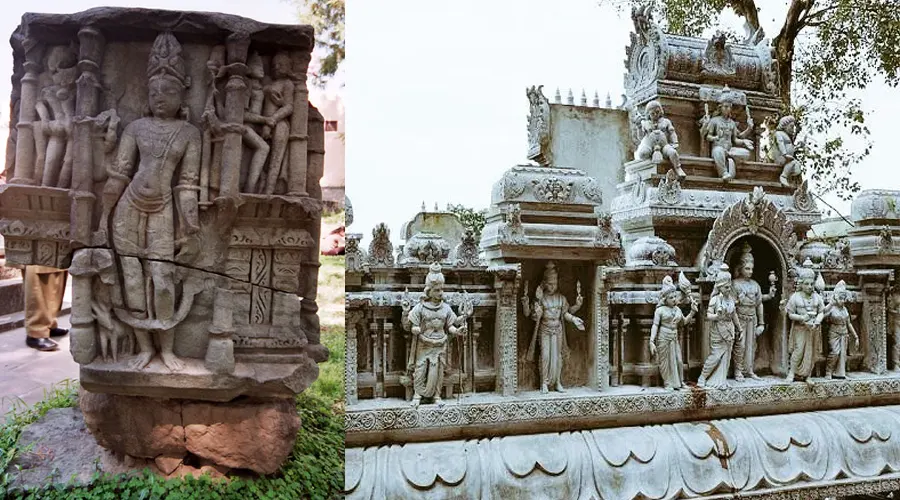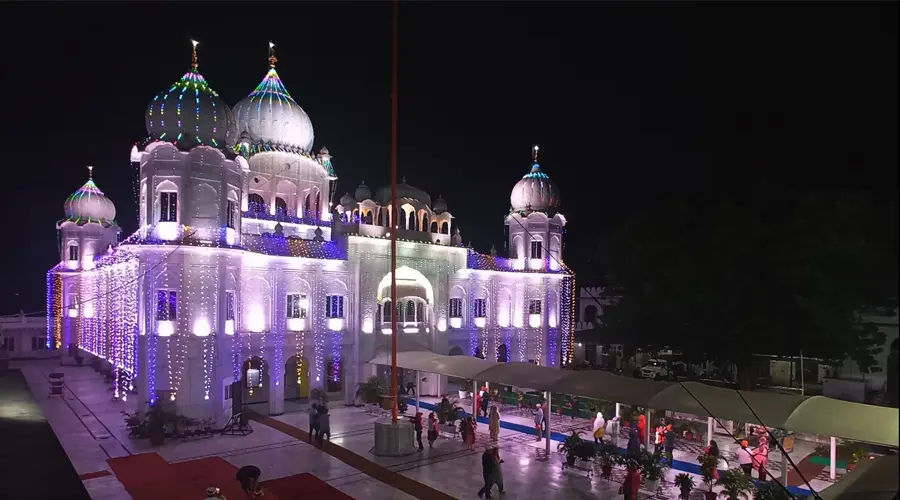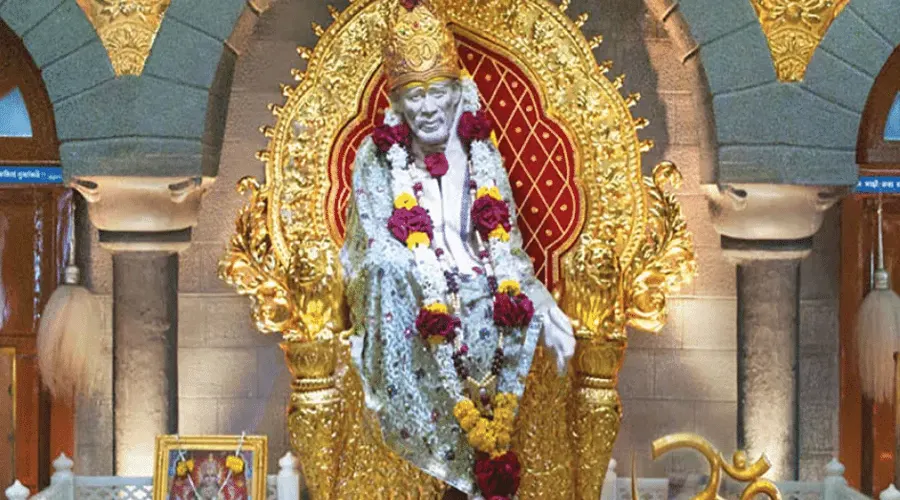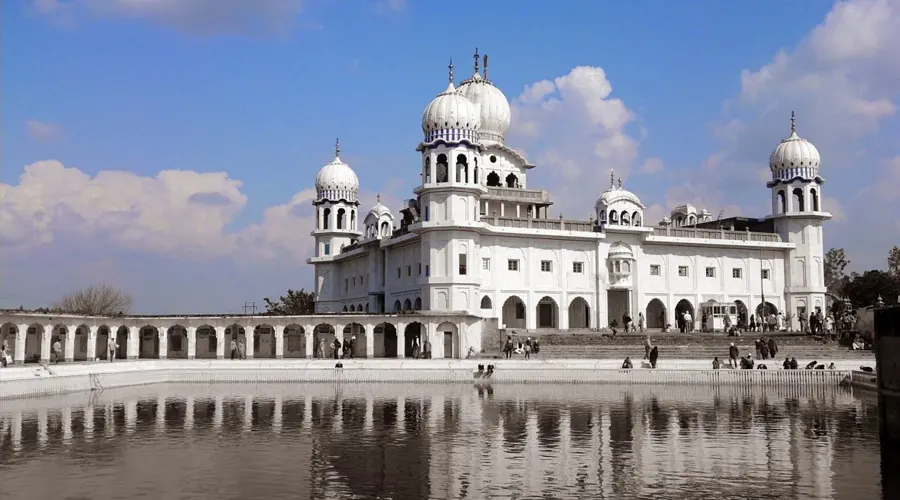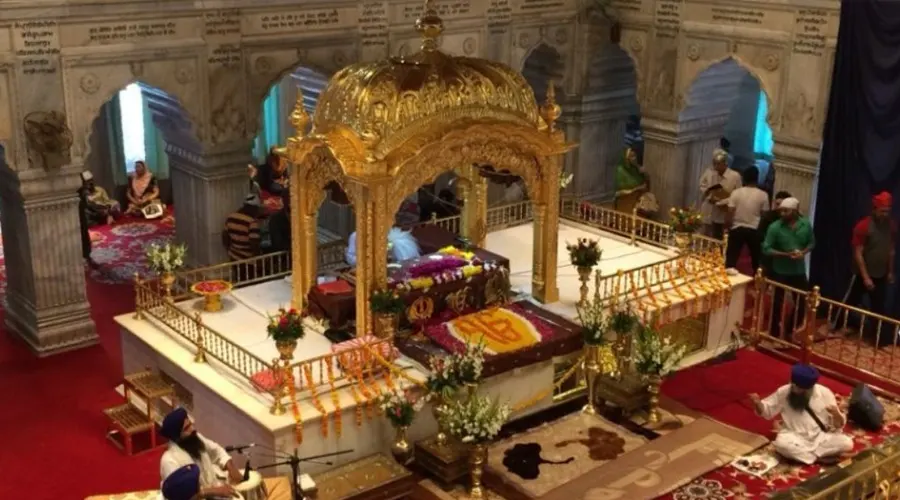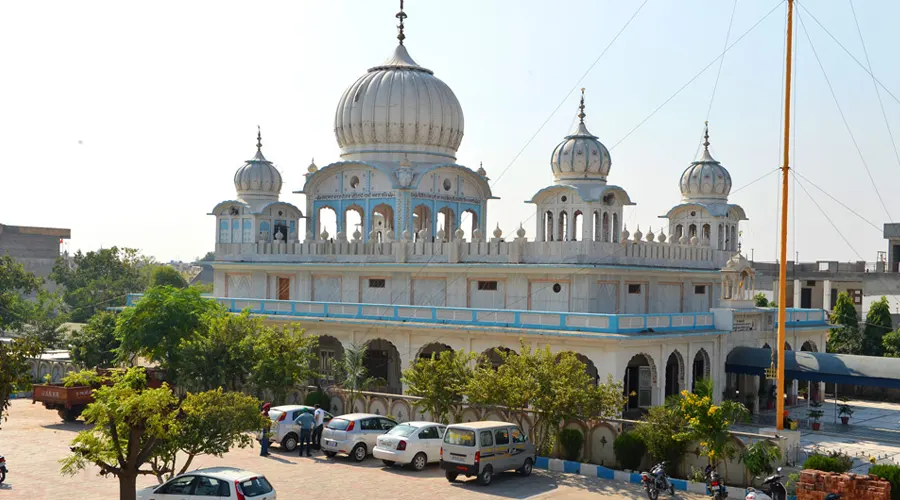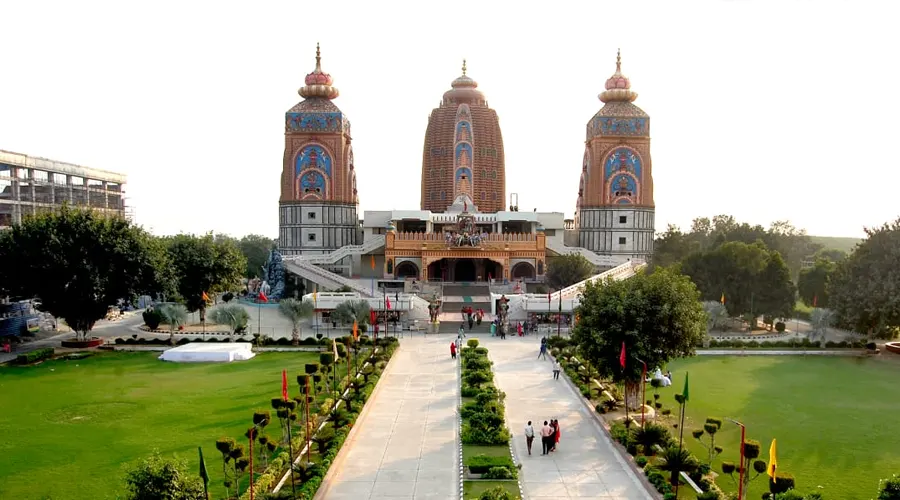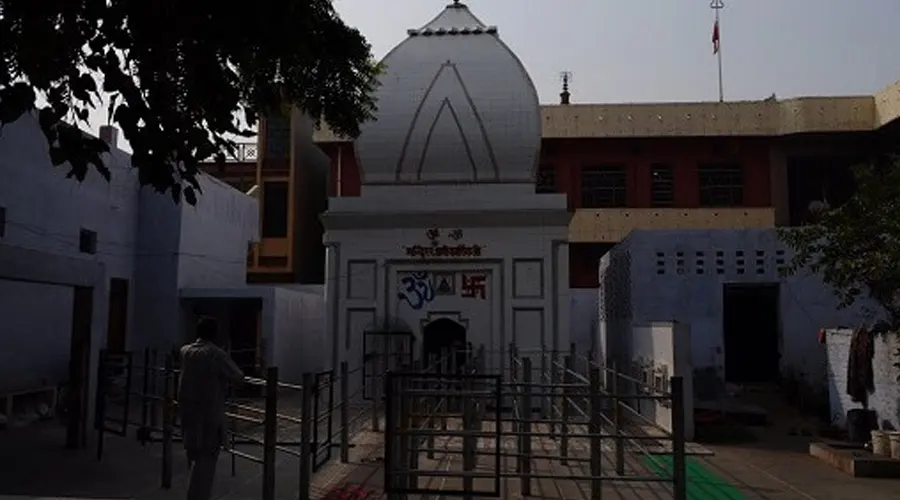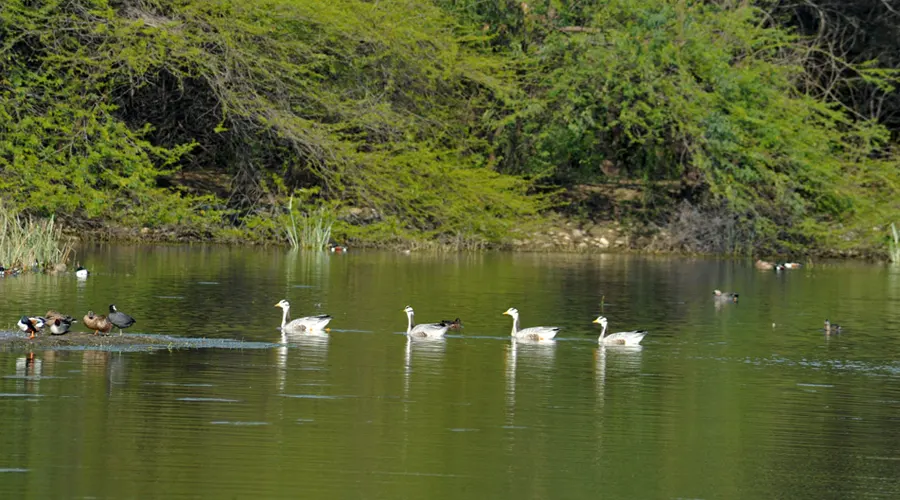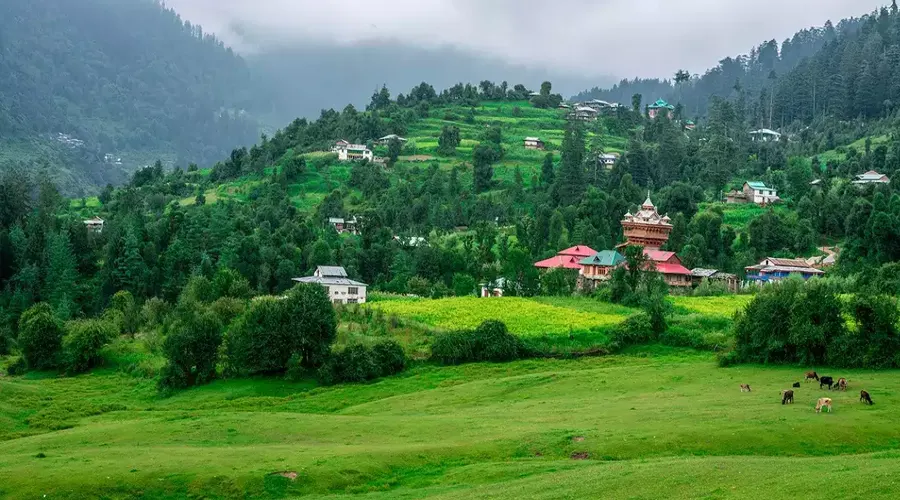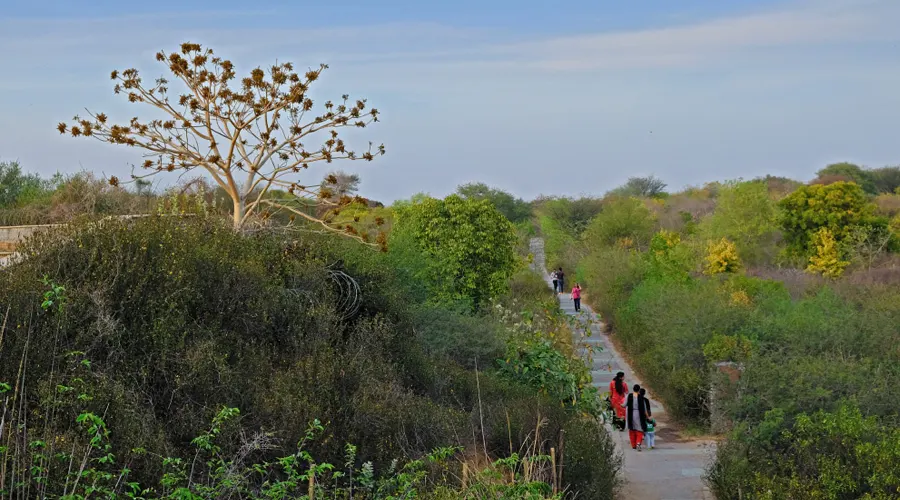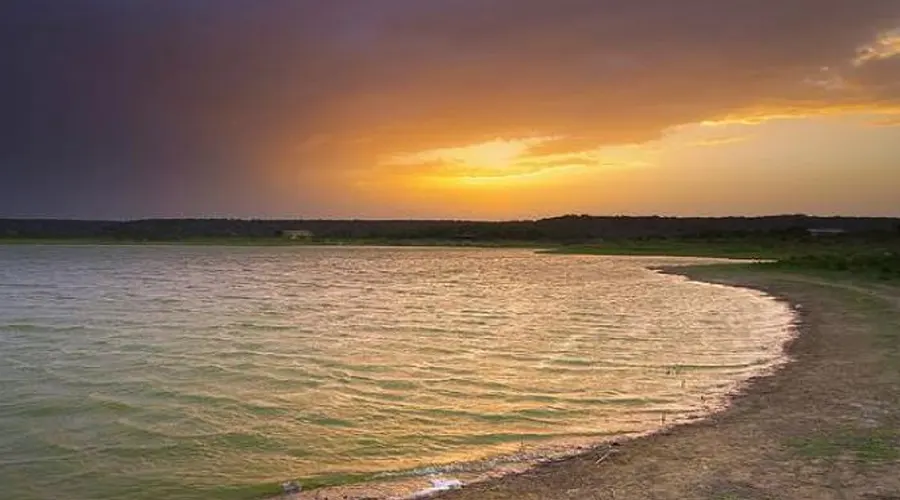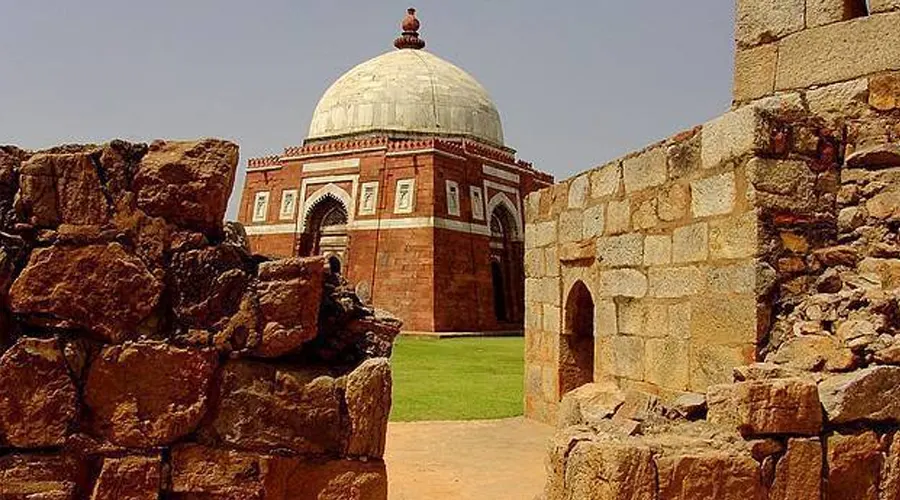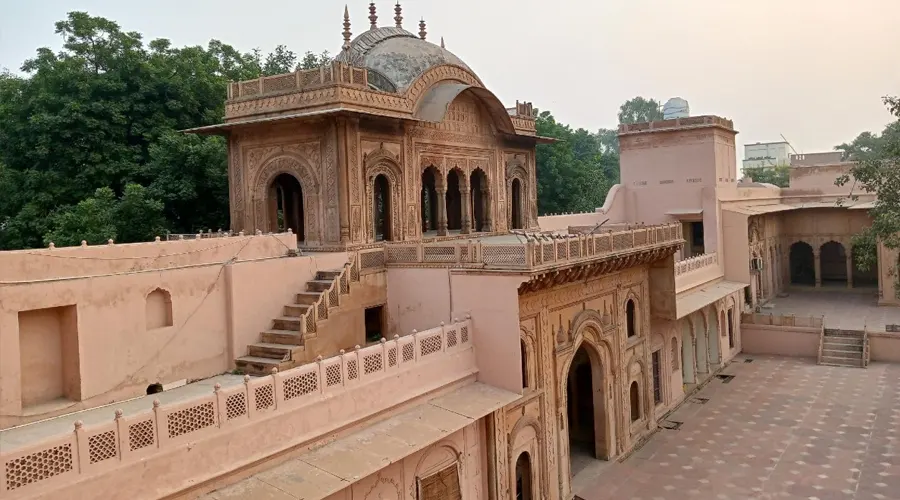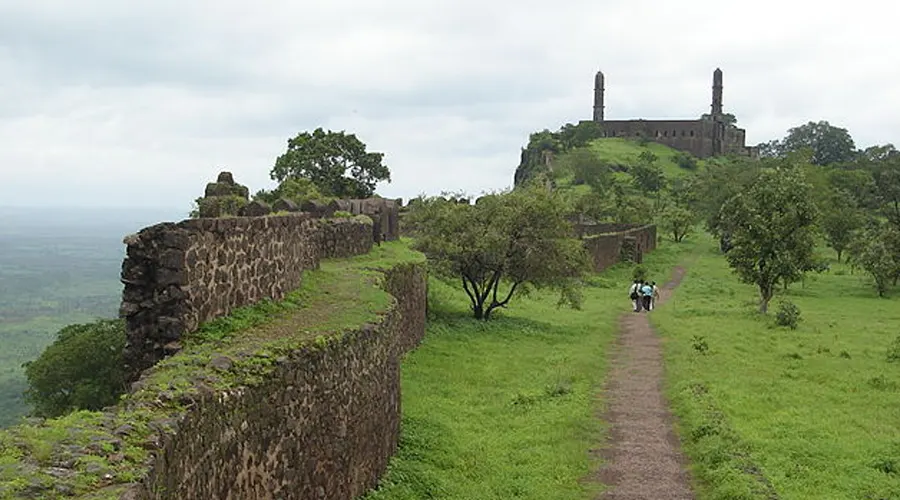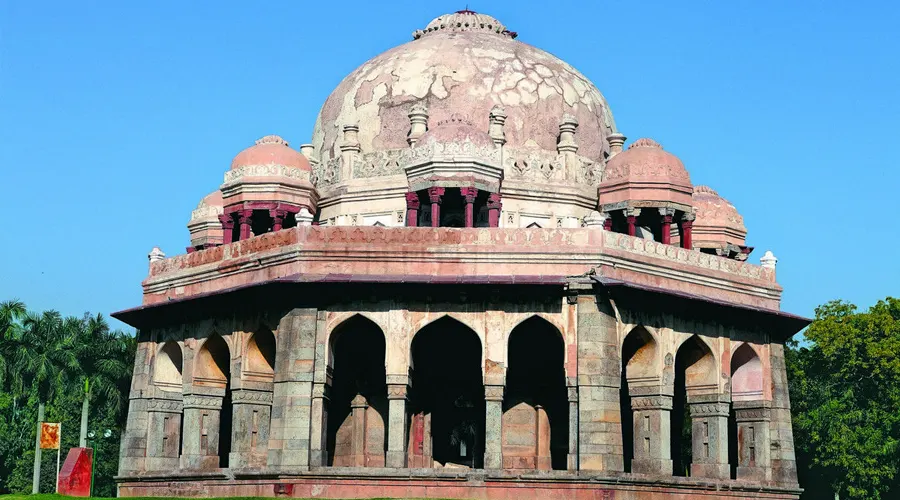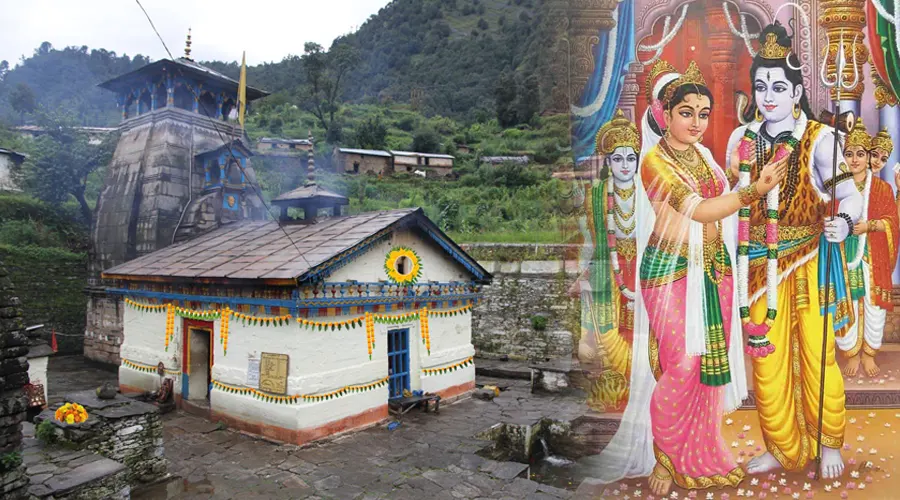Bhima Devi Temple
Constructed sometime between the 9th and 11th centuries AD, the ruins of the Bhima Devi Temple are an interesting spot to learn more about history. As evident from excavations from around the area, the temple was once dedicated to Lord Shiva.
It is said that there were three stone plinths here, which may have belonged to the beautiful ancient temple. The stone plinths indicate that the temple must have been built in the Panchayat style of architecture, in which the main shrine is located at the center and four sub-shrines are placed in the four cardinal directions.
This makes a total of five temples. The temple has figurines and sculptures that are similar to the ones in Khajuraho. Moreover, the remains have shown that the ancient temple included architectural elements like chaitya windows, Bhadramukha, and miniature turrets, among others.
Sculptures of Lord Shiva, Goddess Parvati, Goddess Agni, Lord Varuna (god of air), Lord Surya (the sun god), Lord Vishnu, Lord Ganesha, and Lord Kartikeya have also been found at this site. Some important inscriptions were excavated to link the temple to the historical figure of Raja Rama Deva, who might even have patronized it. The ruins are easily accessible from Chandigarh, being only 10 km away from the famous Yadavindra Gardens in Pinjore.
History of Bhima Devi Temple
The Bhima Devi temple was established during the reign of Gurjar Pratihars. Most of the sculptures and temple portions were ruined during the Mughal period. The unearthed findings recovered over 100 antiquarian sculptures, a five-temple complex along the main shrine representing the Panchayatana style of architecture.
Next to the temple complex is the Pinjore Garden which is also known as Mughal gardens. This garden was established by Aurangzeb’s foster brother. The garden was constructed using the ruins of the Hindu temples which were destroyed by the Muslim invaders between the 13th century and the 17th century.
Bhima Devi temple history dates back to the 8th century and 11th century AD while the history of the adjacent Pinjore gardens dates back to the 17th century.
Pinjore town where the temple complex stands has a mythological association with the Pandavas. As per some blockedures, earlier this place was known as Panchpura which is now known as Pinjore. It is said that during the forced exile period of 13 years, Pandavas stayed at this place for about one year on their way to the Himalayas.
The Pandavas worshiped Goddess Mahakali and performed a havan and puja at this place. Legend also states that Bhima Devi belongs to the Shakti tradition which was derived from the Buddhist tantric goddess. In the Devi Mahatmya it is mentioned that in the Western Himalayas of Himachal Pradesh, Bhimadevi appeared in an enormous form of Bhima rupa or Bhima’s form and protected the sages from demons.
Architecture of Bhima Devi Temple
Bhima Devi Temple Site Museum is a complex that has numerous restored ruins of the Bhima Devi Temple which dates back between the 8th and 11th century AD. The sculptures of the temple exemplify the architectural achievements of India since earlier times.
The sculptures are finely carved and mostly mirror erotic figures, Hindu Gods and Goddesses, apsaras, Gandharvas, musicians, and motifs of animals. These ruins were recovered during an excavation carried out in 1974. Around 100 antique sculptures and a layout plan of a five-temple complex were found at the site.
The complex also has an adjoining Mughal Garden renamed as Yadavindra Gardens. The garden was supposedly constructed in the 17th century using the temple ruins. The garden has seven terraces and reflects splendor at every stage. The garden has 4 palaces, namely the Shish Mahal (Palace of Mirrors), Hawa Mahal (Breezy Palace), Rang Mahal (Palace of Colors), and Jal Mahal (Palace of Water).
There is also an open-air theater in the garden, along with an adjoining zoo. The garden, when seen from a distance, looks as if it has worn a blanket of lush greenery. The flowerbeds, well-manicured hedges, dense fruit trees, cypress trees, and fountains all add to the beauty of the place. A perfect place to not only appreciate ancient architecture but also enjoy quality time with dear ones, head towards this site on a fine evening.

